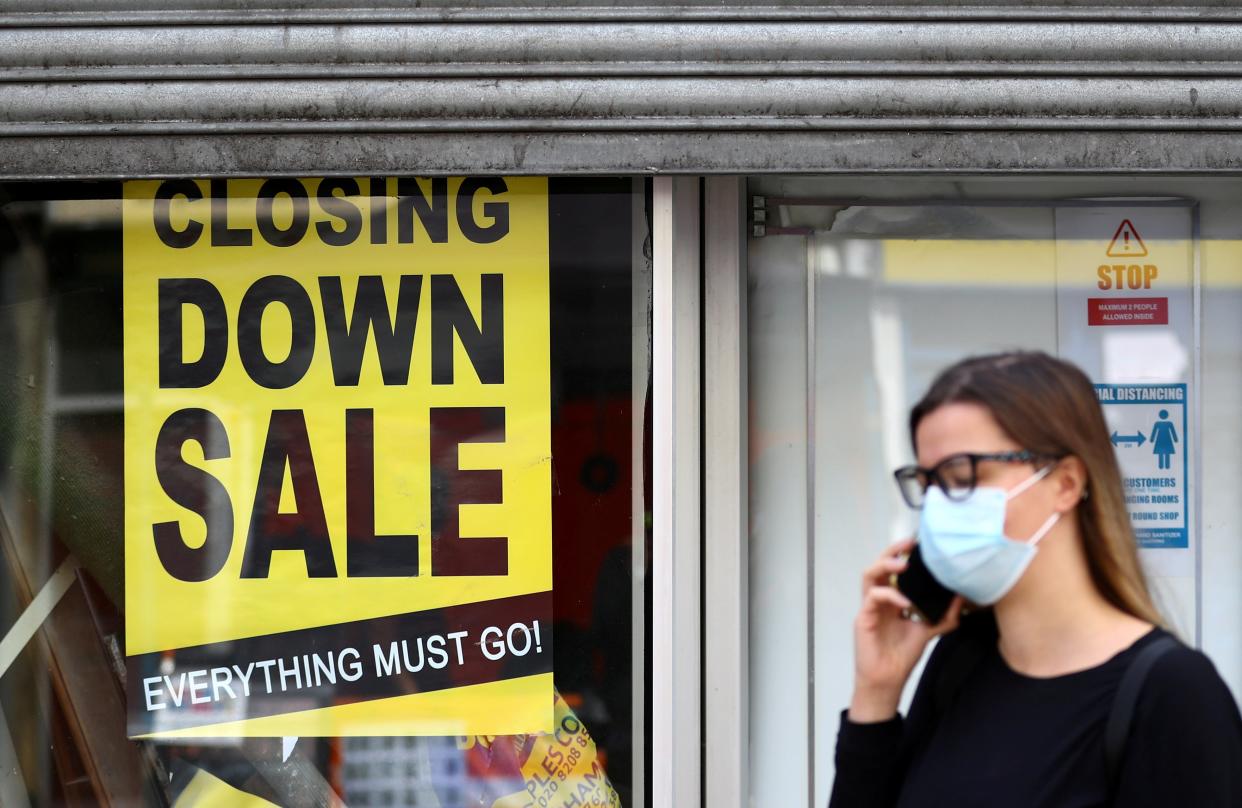What would be the economic impact of a new national lockdown?

Some analysts were already projecting stagnation for the UK economy over the final quarter of 2020
(REUTERS)If we are – as is being briefed by Downing Street – about to enter into another tough set of national restrictions to curb the spread of coronavirus ahead of Christmas what will the economic impact be?
What will be the cost of a second lockdown?
Precise economic forecasts are always dubious, and especially so in these circumstances, when we don’t know what the restrictions would actually be or for how long they would last.
If they involve closures of non-essential retail and hospitality the impact on those particular sectors would, of course, be devastating, as their lobby groups have been making clear.
But what about the overall economic impact?
The economy is estimated to have fallen by almost a quarter earlier this year during the first lockdown – easily the biggest slump in UK recorded history.
There are some reasons to hope the impact of another lockdown would not be as severe as that.
The signals from ministers are that schools and universities would not close this time. With education output accounting for around 5 per cent of GDP that should – purely on an arithmetic basis – mean a smaller loss.
And last time the toughest restrictions were in place for two months. This time the talk is of one month of curbs.
Some companies that have implemented new physical distancing protocols since March, such as construction firms, might be able to stay open too.
But the economic impact would still undoubtedly be severe.
Between April and August the economy is estimated to have recovered around two thirds of the lost activity, leaving GDP around 10 per cent below its level in February.
Yet the signs are that momentum was already slowing over recent weeks.
Some analysts were already projecting stagnation over the final quarter of 2020.
New restrictions on top must surely heighten the chances of a return to contraction - a double dip.
Simon French of the stockbroker Panmure Gordon thinks there could be a hit of around 5 per cent in the final quarter.
The blow to business investment from a second lockdown might be even greater than the first, threatening longer term damage to the UK’s growth potential.
Furthermore, the Treasury’s support measures to prevent mass redundancies and big falls in livelihoods are starting to look increasingly inadequate.
The furlough scheme ends today – and its replacement is less generous to workers, with only two thirds of wages covered rather than 80 per cent.
The Treasury has still yet to increase the generosity and scope of Statutory Sick Pay, even though it’s a manifestly vital tool in fighting the disease.
Business groups are, understandably, increasing pressure for enhanced support for affected firms and workers.
If we are going into a second lockdown it’s not clear what justification there can be for not deploying the same levels of support as in the first one.
As we know, the government’s scientific advisors on the Sage committee, were last month proposing a two week “circuit breaker” lockdown, perhaps coinciding with the October half term holiday that has just ended.
Would that have been preferable for the economy? The answer is that it might well have been.
Last month the Prime Minister was talking about how “a stitch in time saves nine”, meaning that restrictions now - such as the 10pm pub curfew - would save the need for larger restrictions in future.
But there’s an economic logic to this as well.
Getting on top of the virus with severe measures early, the argument goes, might restrict economic activity in the short term, but would enable the economy to be opened up sooner. And a later lockdown will require a longer period of restrictions.
This is the economic argument against delaying imposing a lockdown today - against waiting and see if the disease really is spreading as rapidly as Sage fears.
In all of these calculations ministers would do well to bear in mind the growing evidence base that, when the virus is spreading rapidly, economic activity takes a hit regardless of the restrictions imposed by the government.
The idea that it is solely the restrictions, rather than the virus itself, which harms the economy and livelihoods is a fallacy that really needs to be exorcised from Downing Street this Halloween.
Read more
Deaths could reach 4,000 a day without new lockdown, scientists warn
Boris Johnson considering second national lockdown - live
Sunak’s furlough U-turn leaves him groping for a coherent strategy


